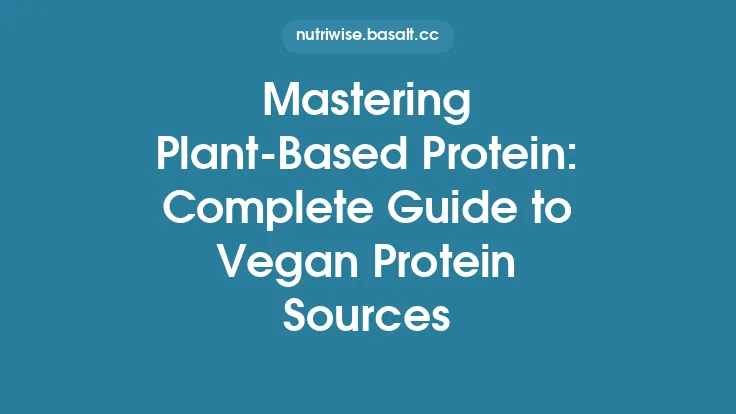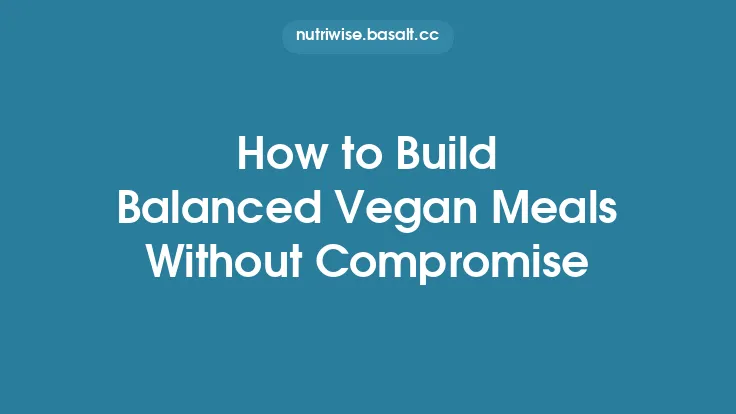Ferment‑free vegan preserves and condiments are a wonderful way to capture the peak flavors of seasonal produce, extend the life of fresh ingredients, and add depth to everyday meals without relying on the microbial activity that defines traditional fermentation. By mastering a handful of core principles—acid balance, sugar or alternative sweeteners, water activity control, and proper storage—you can create a pantry stocked with vibrant jams, tangy pickles, savory chutneys, and silky sauces that stay safe and delicious for months. This guide walks you through the science, the techniques, and the creative possibilities behind ferment‑free vegan preserving, giving you the confidence to experiment and the knowledge to keep your creations both tasty and safe.
Understanding Ferment‑Free Preservation
The Three Pillars of Shelf Stability
- Acidity (pH) – A low pH (≤ 4.6) inhibits the growth of pathogenic bacteria, especially *Clostridium botulinum*. Acid can be introduced through vinegar, citrus juice, or naturally acidic fruits and vegetables.
- Sugar (or Sugar Substitutes) – Sugar binds water, reducing the water activity (a_w) that microbes need to thrive. In fruit preserves, the natural sugars often provide enough a_w reduction; for savory condiments, a modest amount of sugar or alternative humectants (e.g., maple syrup, agave, or erythritol) can be added.
- Heat Treatment – Proper canning or pasteurization destroys existing microorganisms and creates a vacuum seal that prevents re‑contamination.
Why “Ferment‑Free” Matters
Fermentation relies on beneficial microbes to develop flavor and preserve food. While delicious, fermentation introduces variables such as starter cultures, temperature control, and extended time frames. Ferment‑free methods give you immediate, predictable results and are especially useful when you need a quick, shelf‑stable condiment that complies with strict dietary restrictions (e.g., low‑histamine diets).
Key Ingredients and Their Functions
| Ingredient | Primary Role | Typical Usage | Notes |
|---|---|---|---|
| Vinegar (distilled, apple cider, wine) | Acidifier, flavor enhancer | 1 – 2 Tbsp per cup of produce for pickles; ¼ cup per quart for chutneys | Choose unflavored varieties for neutral taste; add herbs/spices for complexity |
| Citrus Juice (lemon, lime) | Acidifier, bright flavor | 1 – 2 Tbsp per cup of fruit jam; ¼ cup per quart for sauces | Freshly squeezed provides better aroma than bottled |
| Sugar / Natural Sweeteners | Reduces water activity, balances acidity | ½ – 1 cup per pound of fruit; 1‑2 Tbsp per cup of savory relishes | Adjust for low‑sugar diets; honey is not vegan |
| Pectin (commercial or fruit‑derived) | Gel formation in jams | 1 – 2 tsp per quart of high‑pH fruit | Use low‑methoxyl pectin for low‑sugar recipes |
| Salt | Flavor, mild preservative (draws moisture) | ½ – 1 tsp per cup of vegetables | Use sea salt or kosher salt; avoid iodized if you prefer a cleaner taste |
| Oil (olive, avocado, coconut) | Fat barrier, flavor carrier | ½ cup per quart for oil‑preserved herbs or sun‑dried tomatoes | Ensure oil is stored in a cool, dark place to prevent rancidity |
| Spices & Herbs | Flavor depth, some have antimicrobial properties | To taste; typical ratios: ½ tsp whole peppercorns per cup, 1 tsp dried herbs per quart | Toast whole spices briefly to release aromatics |
Core Preservation Techniques
1. Water‑Bath Canning (Boiling‑Water Bath)
*Best for high‑acid foods* such as fruit jams, pickles, and tomato‑based sauces.
Steps Overview
- Prepare Jars – Wash, rinse, and sterilize mason jars, lids, and bands.
- Fill – Pack hot, acidified product into jars, leaving ¼‑½ in. headspace.
- Remove Air Bubbles – Run a non‑metallic spatula around the interior.
- Seal – Wipe rims, place lids, and screw bands fingertip‑tight.
- Process – Submerge jars in a boiling water bath (212 °F/100 °C) for the time specified by altitude and product type (e.g., 10 min for jams, 15 min for pickles).
- Cool – Remove jars, let them sit undisturbed for 12‑24 h. Check seals; store sealed jars in a cool, dark pantry.
Why It Works – The combination of high acidity and the heat kill off spoilage organisms, while the vacuum seal prevents re‑contamination.
2. Refrigerator or Freezer Storage
*Ideal for small batches or condiments you’ll use within weeks.*
- Refrigerator: Store in clean glass containers with tight lids. Most pickles, relishes, and chutneys stay fresh 2‑4 weeks.
- Freezer: Transfer to freezer‑safe bags or containers; label with date. Fruit jams and sauces retain quality for 6‑12 months. Thaw in the refrigerator before use.
3. Dehydration & Powdering
*Great for making spice‑rich fruit powders, dried herb blends, or “sugar‑free” fruit leather.*
- Drying: Slice fruit/vegetables thinly, arrange on a dehydrator tray, set to 135 °F (57 °C) until leathery or crisp.
- Powdering: Blend dried pieces into a fine powder; store in airtight jars. Use as a flavor booster in sauces or dressings.
4. Oil‑Based Preservation
*Works for herbs, sun‑dried tomatoes, roasted peppers, and garlic.*
- Method: Submerge fully cooked or blanched ingredients in oil, ensuring no air pockets. Add a splash of vinegar (½ tsp per cup) to lower pH slightly. Store in the refrigerator; consume within 2 weeks. For longer storage, freeze oil‑preserved items in portioned containers.
5. Vacuum Sealing & Sous‑Vide Pasteurization
*Advanced technique for precise temperature control.*
- Process: Place prepared condiment in a vacuum‑seal bag, seal, and pasteurize in a water bath at 185 °F (85 °C) for 30 min (adjust based on viscosity). This method extends shelf life while preserving bright flavors.
Recipe Ideas to Populate Your Pantry
Fruit Jam with Low‑Sugar Pectin
Ingredients
- 4 cups mixed berries (fresh or frozen)
- ½ cup maple syrup (or ⅓ cup erythritol for low‑cal)
- 2 Tbsp low‑methoxyl pectin
- ¼ cup lemon juice (fresh)
- 1 tsp vanilla extract (optional)
Method
- Combine berries and lemon juice in a large pot; bring to a boil, then simmer 5 min.
- Stir in maple syrup; return to a rolling boil.
- Sprinkle pectin evenly, whisk vigorously to avoid clumps.
- Boil 1 min, then remove from heat.
- Ladle into sterilized jars, process in a boiling‑water bath for 10 min.
*Result*: A glossy, spreadable jam with a balanced sweet‑tart profile, shelf‑stable for 12 months.
Quick‑Pickle Cucumber Relish (No Fermentation)
Ingredients
- 2 cups thinly sliced cucumbers (seeded)
- ½ cup thinly sliced red onion
- ¼ cup rice vinegar (5 % acidity)
- 2 Tbsp sugar
- 1 tsp mustard seeds
- ½ tsp crushed red pepper flakes
- ½ tsp salt
Method
- Pack cucumbers and onion into sterilized jars, leaving ¼ in. headspace.
- In a saucepan, combine vinegar, sugar, mustard seeds, pepper flakes, and salt; bring to a boil, dissolve sugar.
- Pour hot brine over vegetables, seal jars, and process for 5 min in a boiling‑water bath.
*Result*: Crisp, tangy relish ready in a day, lasting 6 months.
Savory Tomato‑Pepper Chutney
Ingredients
- 3 cups diced tomatoes (peeled)
- 1 cup diced red bell pepper
- ½ cup diced onion
- ¼ cup apple cider vinegar
- ¼ cup brown sugar (or coconut sugar)
- 1 tsp grated ginger
- ½ tsp ground cumin
- ¼ tsp cinnamon
- ½ tsp salt
Method
- In a heavy pot, combine all ingredients; bring to a boil.
- Reduce heat and simmer, stirring occasionally, until mixture thickens (≈30 min).
- Adjust seasoning; if too acidic, add a touch more sugar.
- Ladle into hot jars, process for 15 min in a boiling‑water bath.
*Result*: A sweet‑spicy condiment perfect for grain bowls, tofu, or vegan cheese plates.
Herb‑Infused Olive Oil (Shelf‑Stable)
Ingredients
- 2 cups extra‑virgin olive oil
- ¼ cup fresh rosemary, lightly bruised
- ¼ cup fresh thyme
- 2 Tbsp white wine vinegar (optional, for extra acidity)
Method
- Warm oil gently (≈120 °F/49 °C) – do not fry.
- Add herbs; simmer 5 min, then remove from heat.
- Stir in vinegar if using.
- Transfer to sterilized glass bottles, seal, and refrigerate. Use within 2 weeks.
*Result*: Aromatic oil for drizzling over roasted vegetables or salads.
Safety Guidelines and Shelf‑Life Considerations
- pH Testing – Use a calibrated pH meter or test strips. All ferment‑free preserves should be ≤ 4.6. If a batch reads higher, add more acid (vinegar or citrus) and re‑process.
- Water Activity (a_w) – While most home cooks don’t measure a_w, a rule of thumb: high sugar (> 50 % by weight) or high salt (> 2 % by weight) significantly lowers a_w, extending shelf life.
- Headspace – Proper headspace (¼‑½ in.) allows for expansion during processing and creates a vacuum seal. Too little headspace can cause jars to crack; too much reduces the seal’s effectiveness.
- Cooling – Let jars sit undisturbed after processing. Sudden temperature changes can cause seal failure.
- Labeling – Include the product name, date of production, and “Best if used by” date. For home‑canned items, a conservative guideline is 12 months for high‑acid foods.
- Signs of Spoilage – Off‑odor, mold, bulging lids, or any leakage indicate the product should be discarded. Never taste a suspect jar.
Troubleshooting Common Issues
| Problem | Likely Cause | Fix |
|---|---|---|
| Jam is runny | Insufficient pH reduction or low pectin | Add 1‑2 tsp more low‑methoxyl pectin; increase acid (lemon juice) by 1‑2 Tbsp; re‑boil to reduce water. |
| Pickles are soggy | Too much water in vegetables or insufficient brine concentration | Slice vegetables uniformly; salt the brine (½ tsp per cup of water); add a pinch of sugar to improve crispness. |
| Mold on surface | Inadequate acidity or contamination during filling | Verify pH ≤ 4.6; sterilize all equipment; use a clean, dry ladle; process for the full recommended time. |
| Oil turns cloudy | Water droplets or residual moisture in ingredients | Pat dry vegetables/herbs thoroughly before submerging; consider a brief blanch before oil preservation. |
| Lids don’t seal | Band too tight, lid not heated, or insufficient headspace | Tighten bands only fingertip‑tight; ensure lids are fully submerged in boiling water; leave proper headspace. |
Adapting Preserves for Specific Dietary Needs
- Low‑Sugar: Replace part or all of the sugar with erythritol, stevia blends, or fruit puree (which adds natural sweetness and pectin). Remember that sugar also contributes to water activity, so a modest amount of a humectant (e.g., glycerin) may be needed to maintain texture.
- Low‑Sodium: Reduce added salt; compensate with herbs, spices, and a splash of acid to keep flavors bright.
- Allergen‑Free: Avoid nuts or seeds in oil‑preserved items if serving a nut‑allergic audience. Use certified gluten‑free vinegar and ensure all spices are processed in allergen‑free facilities.
- Low‑Histamine: Opt for fresh, high‑acid ingredients and avoid long‑term storage; consume within 1‑2 months and keep refrigerated.
Sustainable Practices and Waste Reduction
- Seasonal Sourcing – Preserve produce at its peak to reduce food waste and support local growers.
- Reusable Glass Jars – Invest in a set of high‑quality mason jars; they’re recyclable, non‑plastic, and maintain flavor integrity.
- Batch Cooking – Combine multiple small recipes into a larger batch to maximize energy efficiency (e.g., a single large pot for jam, then portion into jars).
- Compost Scraps – Use vegetable peels, cores, and herb stems for homemade vegetable stock or compost.
- Water Reuse – Capture the brine from pickles for salad dressings or marinades (ensure it’s still within safe storage time).
Bringing It All Together
Ferment‑free vegan preserves and condiments empower you to transform surplus produce into pantry staples that are both flavorful and shelf‑stable. By mastering the interplay of acidity, sugar (or its alternatives), and heat, you can craft everything from bright fruit jams to tangy pickles and savory chutneys without the unpredictability of fermentation. The techniques outlined—water‑bath canning, refrigeration, dehydration, oil preservation, and even sous‑vide pasteurization—provide a versatile toolbox adaptable to any kitchen setup.
Remember to prioritize safety: test pH, respect processing times, and store your creations properly. With these fundamentals in place, you’ll enjoy a year‑round supply of vibrant, plant‑based condiments that elevate simple meals into culinary experiences, all while reducing waste and honoring the health‑focused ethos of vegan cooking. Happy preserving!





